Acoustic Energy Corinium Loudspeaker Review
We are in the year 2023 A.D. All of Hifidelia listens to music with small, wireless speakers. All of Hifidelia? No! A company with determined ears continues to build speakers like menhirs…
Corinium Dobunnorum, which reads as if the final proofreading left placeholder text, is the Roman name for the town of Cirencester in the English Cotswolds. This is the hometown of Acoustic Energy, and it was an important outpost in Roman Britain for over 25 years. It made sense to name the company’s new, most expensive, and most ambitious speaker after it.
With a pair price of $4,230, the AE520 was previously the most expensive speaker from the English company. Now, they’re asking for $7,400 for the Corinium. And for those who don’t want the speaker in black, white, or teak (Tectona), it can be ordered in a stylish Racing Green for an additional $1,060.
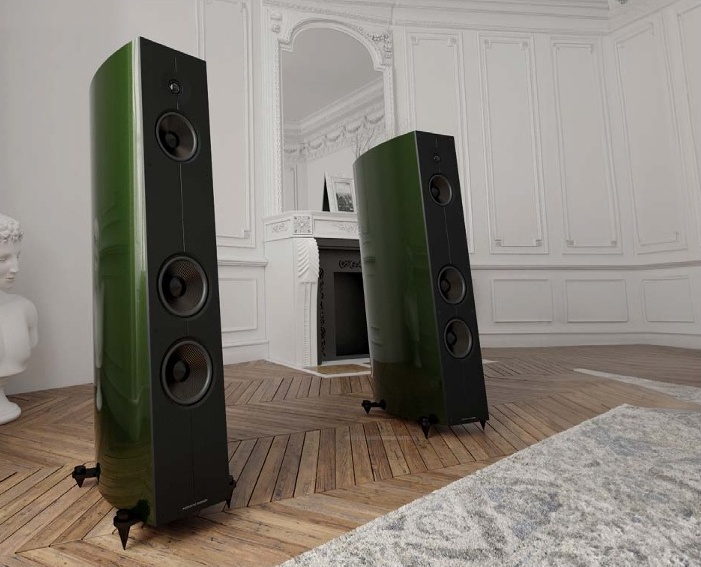
That’s a lot of money, but it doesn’t seem unreasonable when you unbox the speakers and place them in your room. Each channel weighs a hefty 40 kilograms (88 lbs), and the cabinet gives the impression of being acoustically ideal. No wonder lead designer Mat Spandl speaks about them with great pride.
Three Years of Development
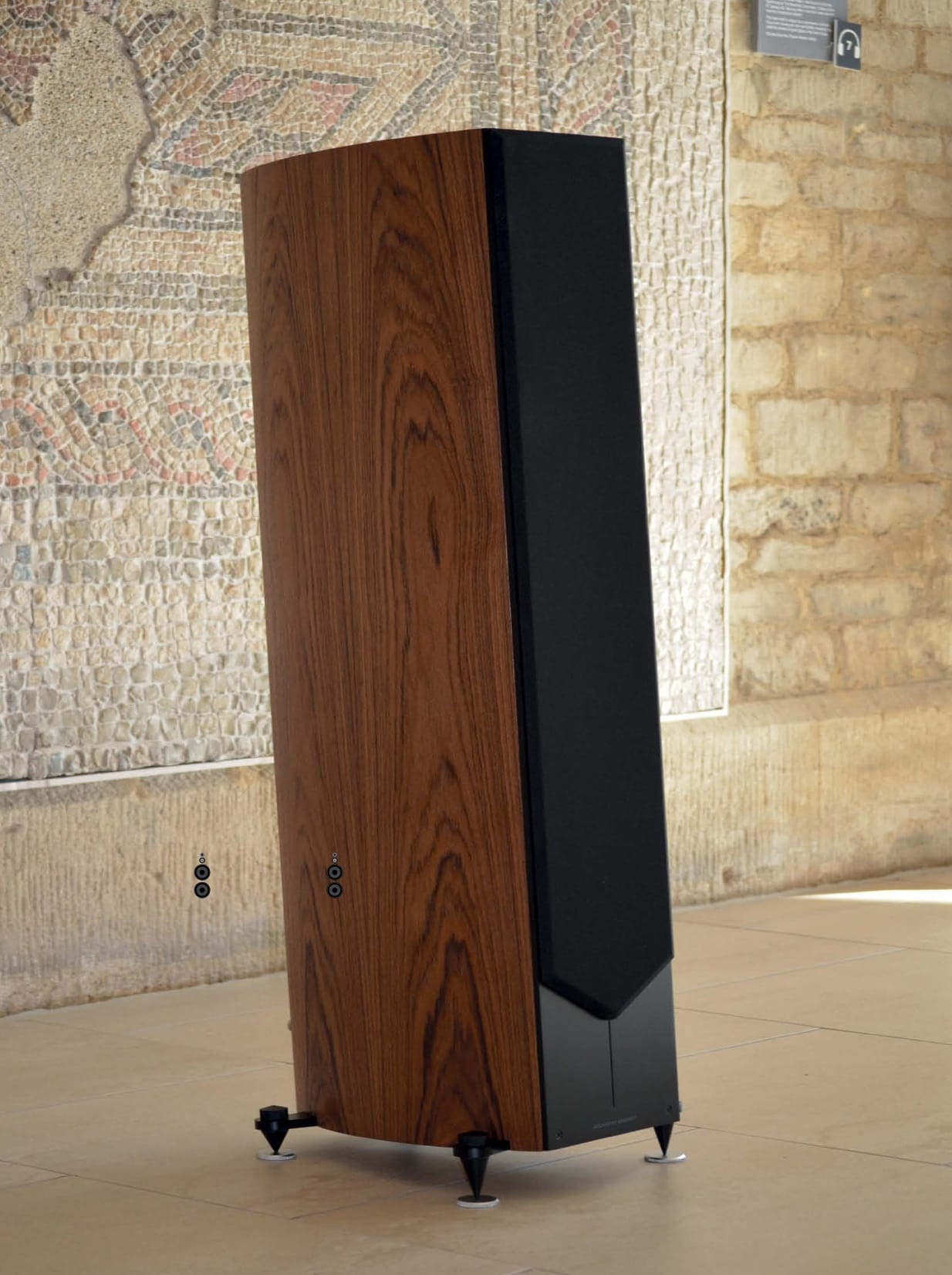
Three years went into the development of the new AE speakers. The goal was clear: to create dynamic, live-sounding, and musically captivating speakers made from high-quality components, capable of filling large rooms with sound.
It was also clear that the cabinet had to be of high enough quality to meet these lofty expectations. The 40 kilograms per speaker come from a “Hybrid-Resonance-Suppression-Composite” (RSC) cabinet. The walls have a minimum thickness of 22 millimeters (0.9 inches) and are as thick as 45 millimeters (1.8 inches) in key areas. The entire cabinet is tilted back by four degrees to optimize timing—this ensures that all sound events from tweeter, midrange, and bass reach the ear simultaneously, which is crucial for timing and sound localization.
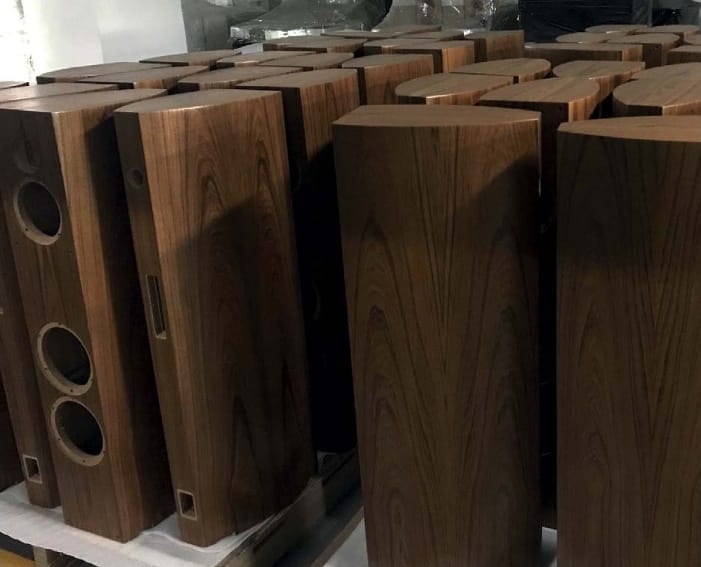
What matters for sound quality is not just the stability of the walls, but also that they are ideally curved to suppress standing waves inside and use the acoustic benefits of rounded edges. The curved side walls are fixed by a narrow back and 50-millimeter thick top and bottom plates. A unique feature is the front panel, which is a sandwich of a 25-mm MDF plate and a six-millimeter-thick aluminum plate screwed together.
Tweeters and Midrange Drivers
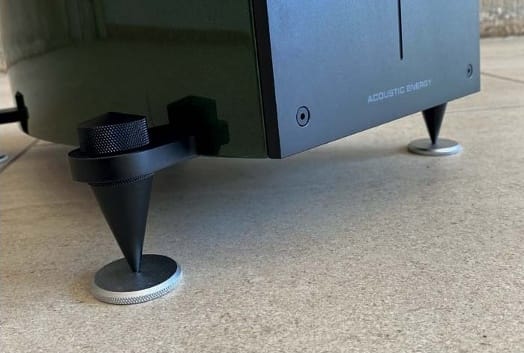
The tweeter was newly developed. After experimenting with carbon fiber, aluminum, and silk, the developers settled on a dome made from a synthetic polyester called Tetoron (diameter: 29 mm). They deliberately avoided using ferrofluid cooling because ferrofluid dries out over time and adds moving mass, which ultimately slows down the tweeter’s response. The tweeter is screwed directly into the aluminum baffle.

The 12-cm (4.7-inch) midrange driver is based on the carbon fiber cone of the 500 series but has been further refined for the Corinium. Acoustic Energy optimized the cone shape to improve its breakup behavior. At the same time, they minimized damping in the cone to achieve a more open sound. The midrange drivers are housed in a ventilated chamber inside the cabinet. This reduces pressure inside the cabinet, resulting in cleaner playback.
Bass and Listening Test
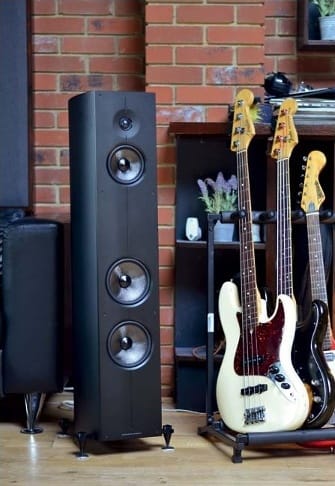
The newly developed woofers also have a carbon fiber membrane, with a diameter of 16.5 cm (6.5 inches). The drivers are designed for high efficiency and speed. When tuning the speakers, the development team took into account room acoustics and psychoacoustic factors. The result is a dual-woofer setup supported by a very deep-tuned bass reflex port. The out-of-phase behavior between the mid-high frequency section and the bass, measured in the lab, was not noticeable in the listening room. The theoretically possible cancellations were neither audible nor measurable.
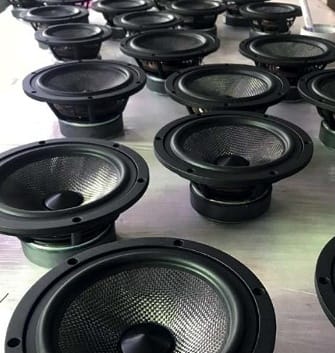
When trying to use the Corinium in a subwoofer test, it quickly became apparent that this makes no sense. The Acoustic Energy floor-stander doesn’t need any low-frequency assistance. Not that there aren’t plenty of floor-standing speakers that could use a little help at the low end, but the Corinium simply doesn’t need it. It delivers a wonderfully tight, rather deep bass that stands out immediately. With “The James Bond Theme” by Pure Desmond, it made it clear what league this incredibly heavy, yet not overly large, speaker plays in. Its sound image seemed larger than the dimensions would suggest.

And it had a clearly defined character that, without being a fortune-teller, will win many hearts: The Corinium always plays pleasantly, but powerfully. Faced with the choice of building an analytical or a more enjoyable speaker, the team clearly opted for the latter. If you want more detail, go for near-field listening; otherwise, just sit back and enjoy. Sure, the mid-high range isn’t the airiest, but the speaker’s robust coherence quickly makes such academic nitpicking fade away. The Corinium brings joy, does nothing wrong, and gets a lot right. The fact that the appearance and finish match the price rounds off this wonderful experience both visually and tactilely, and makes us give a clear recommendation to listen.
Acoustic Energy Corinium Measured Performance

Amplitude and impedance frequency response: Basses raised by 5 dB, otherwise linear frequency response with a slight downward trend between 200 Hz and 10 kHz (about 2 dB). Lower transmission limit 48/40 Hz (-3/-6 dB). Very even radiation—red and blue frequency response curves are practically identical up to 10 kHz. Distortion: Distortion peak at 750 Hz, otherwise clean sound, distortion limit in the bass reached at 104 dB SPL. Time behavior: The midrange and high-frequency sections oscillate out of phase with the bass, but the decay process is very fast. Electrical properties: High efficiency of 86 dB (2 V, 1 m), low minimum impedance of 2.6 Ω. Power requirement for maximum level: 90 W at 3 Ω.
Acoustic Energy Corinium Tech Specs
List price: from $7,400
Warranty: 2 years
Dimensions (W x H x D): 23.5 x 110 x 38.5 cm
Weight: 40 kg
Finish: Black, White, Teak (Tectona), Green (Racing Green available for an additional charge)
Design: 3-way bass reflex
Special features: Racing Green option for an additional charge
CONCLUSION:
Acoustic Energy’s new top speaker impresses. It is very well-made, good-looking, and delivers engaging sound. Its focus on enjoyment rather than analysis makes it wonderfully uncomplicated.
Pros:
- Very pleasant, powerful, lively sound
- Tight, deep bass
- High-quality build
Cons:
- Midrange/treble could be more open
- Fabric cover appears somewhat dull
Test Results
Neutrality: 9/10
Resolution: 7.5/10
Imaging: 7.5/10
Dynamics: 8.5/10
Bass: 8.5/10
Sound rating: 8.2/10
Laboratory analysis: 8.2/10
Build quality: 8.4/10
Audio Benchmark
Overall score: 165 points
Price/performance: Very good






